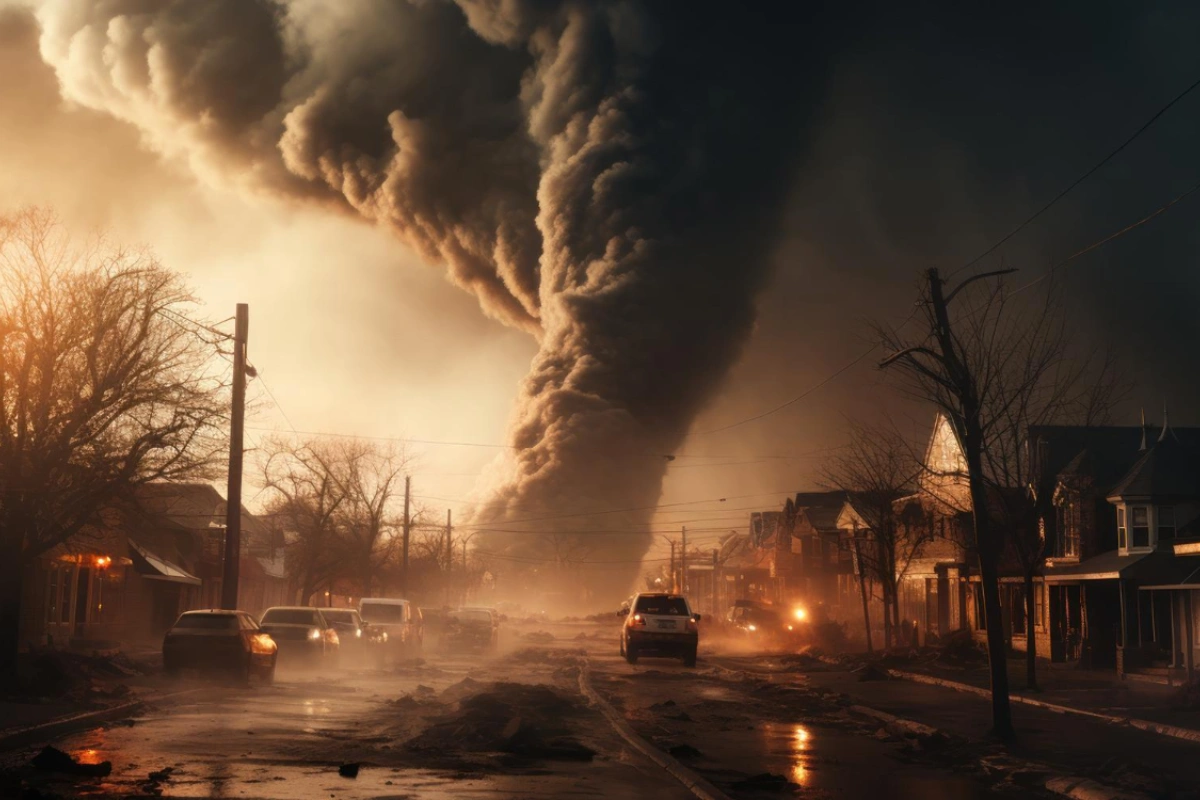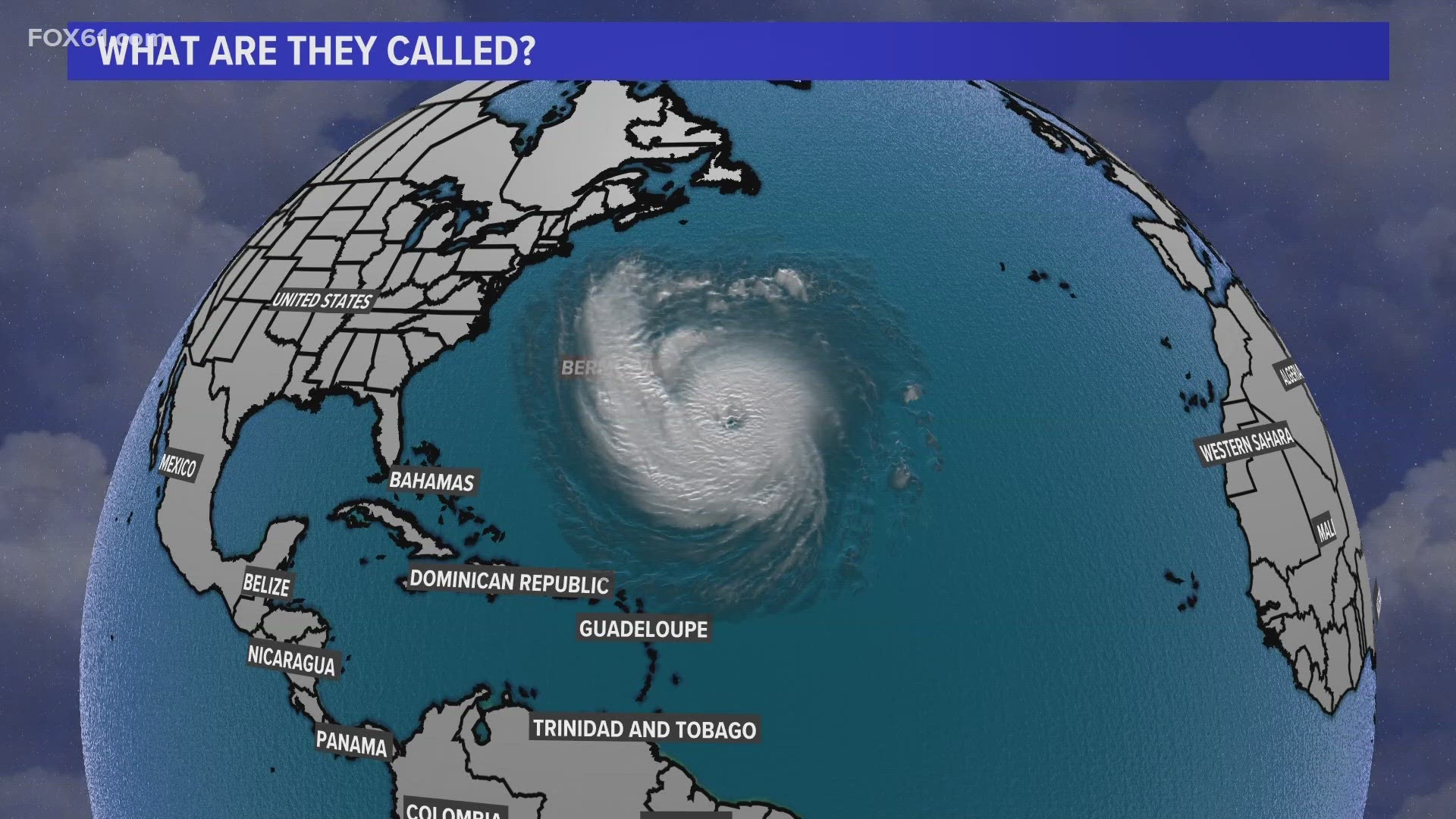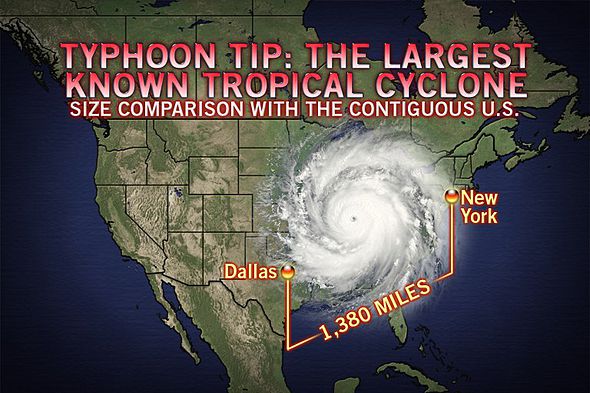In the vast expanse of the world’s oceans, two formidable weather phenomena have long fascinated and terrified humans alike: typhoons and hurricanes. These powerful storm systems are often mentioned in the same breath, but are they truly identical?

The answer lies in their geographical location and the season in which they occur. While both are types of tropical cyclones, hurricanes are found in the Atlantic and northeast Pacific, whereas typhoons dominate the northwest Pacific. This article delves into the intriguing differences between these two mighty forces of nature, shedding light on their distinct characteristics and impacts.
What is the Difference Between a Typhoon and a Hurricane?
A typhoon and a hurricane are essentially the same type of storm; the difference lies in the location where the storm occurs. Both are types of tropical cyclones, which are low-pressure systems that produce strong winds and heavy rain. The primary difference between a typhoon and a hurricane is the geographical area in which they occur.
Geographical Location
Typhoons occur in the western Pacific Ocean, specifically in the area known as the Northwestern Pacific. This region includes countries such as Japan, the Philippines, and Taiwan. On the other hand, hurricanes occur in the Atlantic Ocean, the Caribbean Sea, and the Gulf of Mexico. These storms affect countries in Central America, the Caribbean, and the southeastern United States.
Wind Speed
Both typhoons and hurricanes are classified based on their wind speed using the same scale. The classification system used is called the Saffir-Simpson Hurricane Wind Scale, which categorizes storms into five categories based on their wind speed. The categories are as follows: – Category 1: Winds of 74-95 mph (64-82 kt, 119-153 km/h) – Category 2: Winds of 96-110 mph (83-95 kt, 154-177 km/h) – Category 3: Winds of 111-129 mph (96-112 kt, 178-208 km/h) – Category 4: Winds of 130-156 mph (113-136 kt, 209-257 km/h) – Category 5: Winds of 157 mph or higher (137 kt or higher, 258 km/h or higher)
Formation and Structure
Typhoons and hurricanes have similar structures and formation processes. They both form over warm ocean waters, typically with temperatures above 26.5°C (80°F). The warm water heats the air above it, causing it to rise and create an area of low pressure. As the air rises, it cools, and the water vapor in the air condenses, forming clouds and releasing heat, which in turn causes more air to rise. This cycle continues, creating a rotating system of clouds and thunderstorms that produces strong winds and heavy rain.
Impact
Both typhoons and hurricanes can cause significant damage due to strong winds, heavy rainfall, and storm surges. The impact of these storms can be devastating, leading to loss of life and property damage. However, the impact can vary greatly depending on the strength of the storm and the area affected.
Seasonality
Typhoons and hurricanes have different seasons. The typhoon season in the western Pacific Ocean typically runs from May to October, with the majority of storms occurring between July and September. In the Atlantic Ocean, the hurricane season runs from June to November, with the peak season usually occurring in late summer to early fall.
Etymology
The terms typhoon and hurricane come from different origins. The term typhoon comes from the Chinese word taifeng, meaning great wind. The term hurricane comes from the indigenous Taino people’s word huracán, meaning storm god.
| Characteristic | Typhoon | Hurricane |
|---|---|---|
| Geographical Location | Western Pacific Ocean | Atlantic Ocean, Caribbean Sea, Gulf of Mexico |
| Wind Speed | Same classification system as hurricanes | Same classification system as typhoons |
| Formation and Structure | Forms over warm ocean waters in the western Pacific | Forms over warm ocean waters in the Atlantic, Caribbean, and Gulf of Mexico |
| Impact | Can cause significant damage due to strong winds, heavy rainfall, and storm surges | Can cause significant damage due to strong winds, heavy rainfall, and storm surges |
| Seasonality | May to October, with peak season in July to September | June to November, with peak season in late summer to early fall |
| Etymology | Comes from the Chinese word taifeng, meaning great wind | Comes from the indigenous Taino people’s word huracán, meaning storm god |
Why is a typhoon not called a hurricane?
Geographical Location
A typhoon is not called a hurricane due to its geographical location. Typhoons occur in the western part of the Pacific Ocean, specifically in the area known as the Northwestern Pacific. This region includes countries such as Japan, the Philippines, and Taiwan. On the other hand, hurricanes occur in the Atlantic Ocean, the Caribbean Sea, and the Gulf of Mexico, affecting countries in Central America and the southeastern United States.
Wind Speed
Both typhoons and hurricanes are types of tropical cyclones, which are low-pressure systems that produce strong winds and heavy rain. However, the wind speed of a typhoon is typically stronger than that of a hurricane. Typhoons have wind speeds of 119 km/h (74 mph) or higher, while hurricanes have wind speeds of 119 km/h (74 mph) or higher as well. The difference in wind speed is not the reason for the different names, but rather the geographical location and historical context.
Historical Context
The terms typhoon and hurricane have historical origins. The word typhoon comes from the Chinese term taifeng, which means great wind. It was used by European sailors in the Indian Ocean and later adopted for storms in the western Pacific. The term hurricane comes from the indigenous Taino people of the Caribbean, who called their storm god Huracán. European colonizers adopted this term for storms in the Atlantic. Therefore, the different names are due to the historical context and geographical location of these storms.
Can a typhoon turn into a hurricane?
What is the difference between a typhoon and a hurricane?
A typhoon and a hurricane are essentially the same type of storm; the primary difference lies in the location where the storm occurs. Typhoons are tropical cyclones that develop in the western Pacific Ocean, specifically in the area known as the Northwestern Pacific. On the other hand, hurricanes occur in the Atlantic Ocean, the Caribbean Sea, and the Gulf of Mexico. The storms are referred to as typhoons in the western Pacific and hurricanes in the Atlantic and northeast Pacific.
It is theoretically possible for a typhoon to turn into a hurricane, but it is extremely rare. This would require the storm to travel from the western Pacific Ocean across the International Date Line and into the Atlantic Ocean, which is not a common path for these storms. Most typhoons do not have enough energy to make such a long journey, and they usually dissipate before reaching the Atlantic. However, there have been a few instances where a typhoon has crossed the International Date Line and become a hurricane.
Examples of typhoons turning into hurricanes
One example of a typhoon turning into a hurricane is Typhoon John, which occurred in 1994. It started as a typhoon in the western Pacific and crossed the International Date Line, becoming a hurricane in the eastern Pacific. Another instance is Typhoon Ingrid, which happened in 2007. It also started as a typhoon and later became a hurricane after crossing the International Date Line. These instances are rare and require specific weather conditions for the storm to maintain its strength over such a long distance.
What was the most powerful storm on Earth?
The most powerful storm on Earth is often debated among meteorologists and researchers, as it depends on how one defines powerful. However, one of the most notable contenders for the title is Typhoon Haiyan, which struck the Philippines in 2013. This storm had the highest recorded wind speed of any tropical cyclone at 315 km/h (195 mph), making it one of the strongest tropical cyclones ever recorded. It caused widespread destruction and loss of life, highlighting the immense power that storms can possess.
Wind Speed and Intensity
Wind speed is one of the primary indicators of a storm’s power. Typhoon Haiyan had sustained winds of 315 km/h (195 mph), making it the strongest tropical cyclone on record in terms of wind speed. Other storms, such as Cyclone Olivia in 1996 and Typhoon Meranti in 2016, have also had wind speeds exceeding 300 km/h (186 mph), demonstrating their immense power.
- Typhoon Haiyan (2013) – 315 km/h (195 mph)
- Cyclone Olivia (1996) – 310 km/h (193 mph)
- Typhoon Meranti (2016) – 305 km/h (190 mph)
Pressure and Storm Surge
Another indicator of a storm’s power is its central pressure. The lower the pressure, the more powerful the storm. Typhoon Tip, which occurred in 1979, holds the record for the lowest pressure ever recorded in a tropical cyclone, with a central pressure of 870 hPa (25.69 inHg). Storm surge, or the rise in sea level due to the storm, is also an important factor in assessing a storm’s power. Hurricane Katrina, which devastated New Orleans in 2005, had a storm surge of over 8 meters (26 feet), causing catastrophic flooding.
- Typhoon Tip (1979) – 870 hPa (25.69 inHg)
- Hurricane Katrina (2005) – Storm surge of over 8 meters (26 feet)
Damage and Impact
The damage and impact caused by a storm are also significant indicators of its power. Typhoon Haiyan, mentioned earlier, caused widespread destruction and resulted in over 6,000 deaths in the Philippines. Hurricane Katrina, while not the strongest in terms of wind speed or pressure, caused catastrophic damage and flooding in New Orleans, leading to over 1,800 deaths and billions of dollars in damage.
- Typhoon Haiyan (2013) – Over 6,000 deaths in the Philippines
- Hurricane Katrina (2005) – Over 1,800 deaths and billions of dollars in damage in New Orleans
What is a hurricane called in Australia?
Introduction to Tropical Cyclones
Tropical cyclones, also known as hurricanes or typhoons in other parts of the world, are intense, rotating low-pressure weather systems that are characterized by strong winds and heavy rain. They form over warm ocean waters, typically within 20° of the equator. These storms can bring significant damage and loss of life, especially when they make landfall.
Names of Tropical Cyclones in Australia
In Australia, tropical cyclones are referred to as simply cyclones. They are named using a list of names that are assigned in alphabetical order and are the same for both males and females. These names are chosen from a list of names submitted by countries in the region and are usually common given names. The World Meteorological Organization (WMO) is responsible for maintaining the list of names.
Impact of Cyclones in Australia
Cyclones can have a significant impact on Australia, particularly in the northern regions. They can bring strong winds, heavy rainfall, and storm surges that can cause damage to buildings, infrastructure, and the environment. Cyclones can also disrupt daily activities, cause power outages, and lead to evacuations. Some of the most notable cyclones in Australian history include Cyclone Tracy, which devastated Darwin in 1974, and Cyclone Yasi, which affected Queensland in 2011.
Frequently Asked Questions
What is the difference between a typhoon and a hurricane?
A typhoon and a hurricane are essentially the same type of storm; the primary difference lies in their geographical location. Both are classified as tropical cyclones, which are low-pressure systems that form over warm ocean waters in the Atlantic, Pacific, and Indian Oceans. The storms are fueled by the heat and moisture from these warm waters, and they can grow to be extremely powerful, bringing strong winds and heavy rainfall. The storms are given different names based on where they occur: hurricanes occur in the Atlantic Ocean, the Caribbean Sea, and the Gulf of Mexico, while typhoons occur in the western Pacific Ocean. The storms are referred to as cyclones in the Indian Ocean and southern Pacific Ocean.
What are the characteristics of a typhoon versus a hurricane?
Typhoons and hurricanes share many characteristics, including strong winds, heavy rainfall, and storm surges. They are both classified using the Saffir-Simpson Hurricane Wind Scale, which rates storms from Category 1 (winds of 74-95 mph) to Category 5 (winds of 157 mph or higher). Both types of storms can cause significant damage and loss of life, particularly when they make landfall. However, typhoons tend to occur in areas with higher population densities, such as in Southeast Asia, which can lead to a greater impact on human populations. Hurricanes, on the other hand, often affect areas with lower population densities, such as the southern United States.
How do typhoons and hurricanes form?
Typhoons and hurricanes form in a similar manner, as they are both types of tropical cyclones. They form over warm ocean waters, typically in areas where the water temperature is at least 26.5°C (80°F). As the warm water heats the air above it, the air rises, creating an area of low pressure. This process continues, with more air rising and creating a cycle of wind and precipitation. The Coriolis force, a result of the Earth’s rotation, causes the winds to rotate around the center of the storm, creating the characteristic spiral shape of a tropical cyclone. The storm will continue to grow in strength as long as it remains over warm water and encounters minimal wind shear.
What are the effects of typhoons and hurricanes?
Typhoons and hurricanes can have devastating effects on the areas they impact. The strong winds can cause significant damage to buildings and infrastructure, while the heavy rainfall can lead to flooding and landslides. Storm surges, which are large waves caused by the storm, can also cause coastal flooding and erosion. Additionally, the storms can disrupt power and communication systems, leading to widespread power outages and loss of contact with emergency services. The impact of these storms can be particularly severe in areas with high population densities, such as those affected by typhoons, where the damage and loss of life can be much greater. In areas with lower population densities, such as those affected by hurricanes, the impact may be less severe, but still significant.
I’ve been working in technology and IT since 1993 and on the Internet as a blogger and webmaster since 2004. I love technology, gadgets, movies and travel. I love researching and writing about technology, travel and cars.




